Are you worried about your electronics succumbing to power surges? Investing in a whole house surge protector gives you the assurance that your home and its contents are safe from any destructive electrical surges. But how do you install one? For an uncomplicated, step-by-step tutorial on how to safely and securely install a whole house surge protector in your home, read ahead!
What Is a Power Surge?
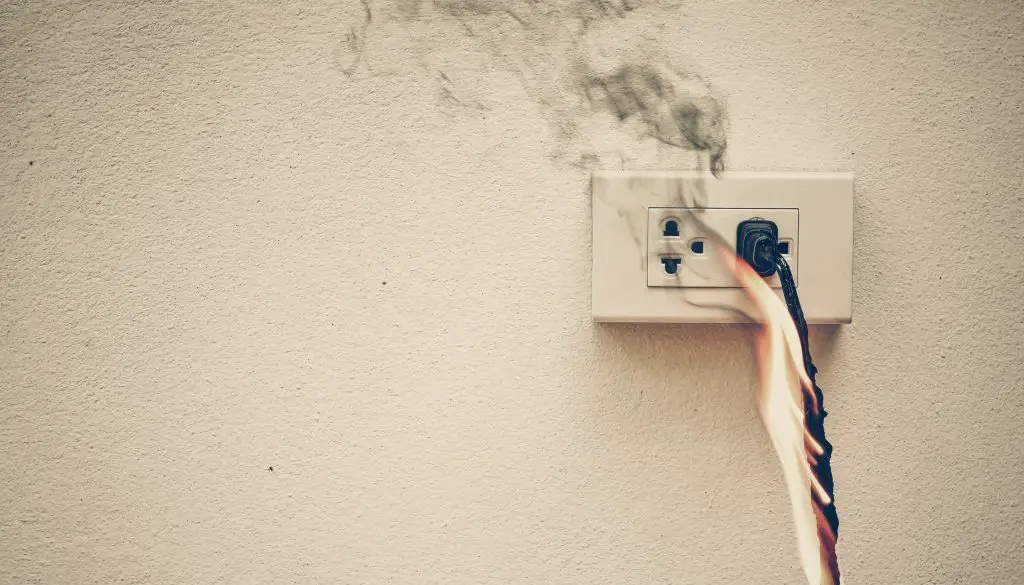
An electrical system is no stranger to a power surge, or what some may call a transient voltage spike–an abrupt increase in current and voltage. Lightning strikes and electrical grid anomalies are often the source of powerful power surges. They can cause severe damage to electronic equipment and appliances, including computers, home entertainment systems, and other sensitive equipment.
Power surges can last from nanoseconds to several seconds and range from less than 1 volt to thousands of volts. The amount of energy from a power surge depends on its magnitude, duration, and frequency. While it is impossible to wholly guard against all kinds of power surges, there are certain steps that can be taken in order to reduce their impact. Surge protectors are a common solution for protecting against power surges. [1]
What Causes Power Surges?
Power surges can be caused by a number of things, from sudden power outages to lightning strikes. Outages can damage the wiring in your home and cause high voltage spikes that can damage anything plugged into an outlet or powered directly through the electrical system.
Lightning strikes are particularly dangerous because they generate huge amounts of energy that can literally fry all of your electronics at once.
To safeguard your home and appliances from any power surge, you must install a whole house surge protector. A whole house surge protector functions similarly to a regular surge protector strip, yet guards your entire residence instead of single electronics.
What Is a Whole House Surge Protector?
Secure your precious home and its contents from power surges by installing a whole house surge protector. This efficient electrical device safeguards both your wiring and electronic appliances, giving you greater peace of mind in the face of any potential danger.
These surges can cause expensive damage to your electronics, or even worse, start a fire in your home. Thus, it is essential to invest in a whole house surge protector to guarantee the safety and security of your family.
How Does a Whole House Surge Protector Function?
A whole house surge protector is a vital asset in any home, as it safeguards all electrical items and wiring against immense voltage fluctuations. By closely observing the voltage input from your utility supplier, any surplus energy gets diverted away from electrical appliances, lighting fixtures and other electronic gadgets.
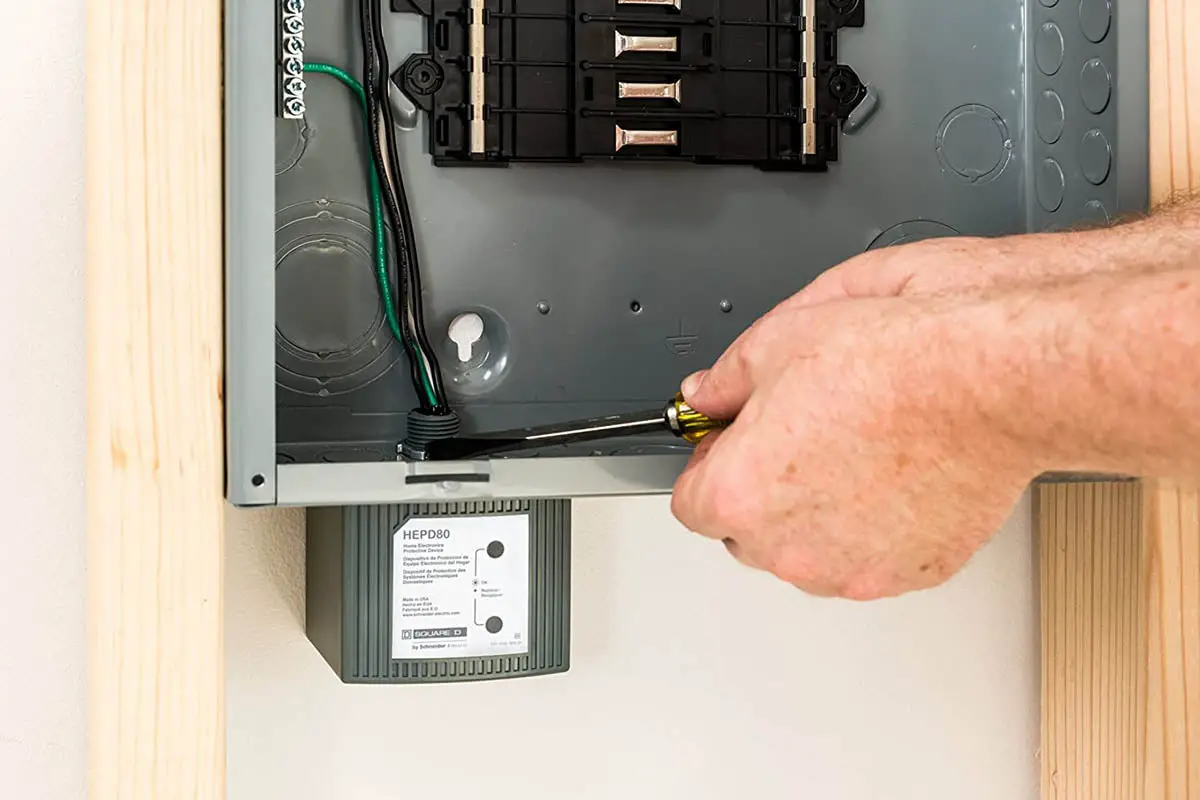
Acting as a buffer between your home’s electrical wiring and the power source, the surge protector can detect potential surges and prevent them from wreaking havoc in your home.
In most cases, installation is relatively straightforward and can be completed in just a few steps. Once installed, you can enjoy peace of mind knowing that your home is protected against electrical surges. To get maximum protection, it’s important to include a variety of features on your unit including: Over Voltage Protection (OVP), Under Voltage Protection (UVP), Spike and Surge Detection, and Ground Fault Interrupt (GFI). Additionally, you should make sure that your surge protector is designed to handle the total number of circuits in your home.
Make sure to follow all of the manufacturer’s instructions when installing your unit and contact an electrician if you’re unsure about anything. [2]
How to Set-Up a Whole Home Surge Protector
Once the surge protector has been installed, it is important to ensure that it is properly set-up to provide the best protection for your home. The steps involved in setting up a whole house surge protector are as follows:
- Make sure that all power sources including utility lines, cables and phone lines are connected directly to the surge suppressor.
- Attach the ground wire from the surge protector to an appropriate grounding point such as a metal water pipe or cold water pipe leading into the ground. This provides additional protection against surges in electrical current by diverting any excess energy into the ground instead of leaving it inside your house where it could cause damage.
- Check that all connections are secure and properly insulated. Look for any signs of wear or damage that may indicate a need to replace the surge suppressor.4. Make sure the breaker switch is in the “on” position and check that the green indicator light on the surge protector is lit, which indicates that it is working properly.
- Finally, test your whole house surge protector by plugging an appliance into one of its outlets and turning it on. If everything is working correctly, you should be able to detect a slight humming noise coming from the device, indicating that it is actively suppressing electric surges and providing protection for your home’s electrical system.
With these simple steps, you can have peace of mind knowing that your whole house surge protector has been installed and set-up correctly to provide the best protection for your home. Be sure to check the surge protector regularly and replace it as needed in order to keep it working properly and maintain maximum protection against electric surges.

You should also be aware of any potential hazards associated with installing or using a whole house surge protector, such as mishandling wires, improper installation or failing to properly ground the device.
To avoid these risks, make sure that you read all instructions provided with the surge suppressor before attempting to install or use it. If you are confused about any part of the process to install a whole home surge protector, don’t hesitate to seek advice from an authorized and certified electrician.
Properly installed and used, a whole house surge suppressor can help protect your home and its electrical system from damaging electric surges.
Protect your home from electrical surges with relative ease through the wise combination of knowledge and preparation – you can easily install a whole house surge protector! This will guarantee that your most valuable asset is as safe as possible.
By following these steps, you can rest assured that your family is safe from the potential damage caused by power surges. [3]
Preparing the Surge Protector on Primary Panel Box
Step 1. Shutting off the power
Before proceeding any further, be sure to switch off the electrical power in your home.
Step 2. Removing panel covers
To access your primary panel box, start by removing the two side panels and lift off the top cover. Before trying to access the doors, ensure that all screws have been removed.
Step 3. Looking for additional surge protectors
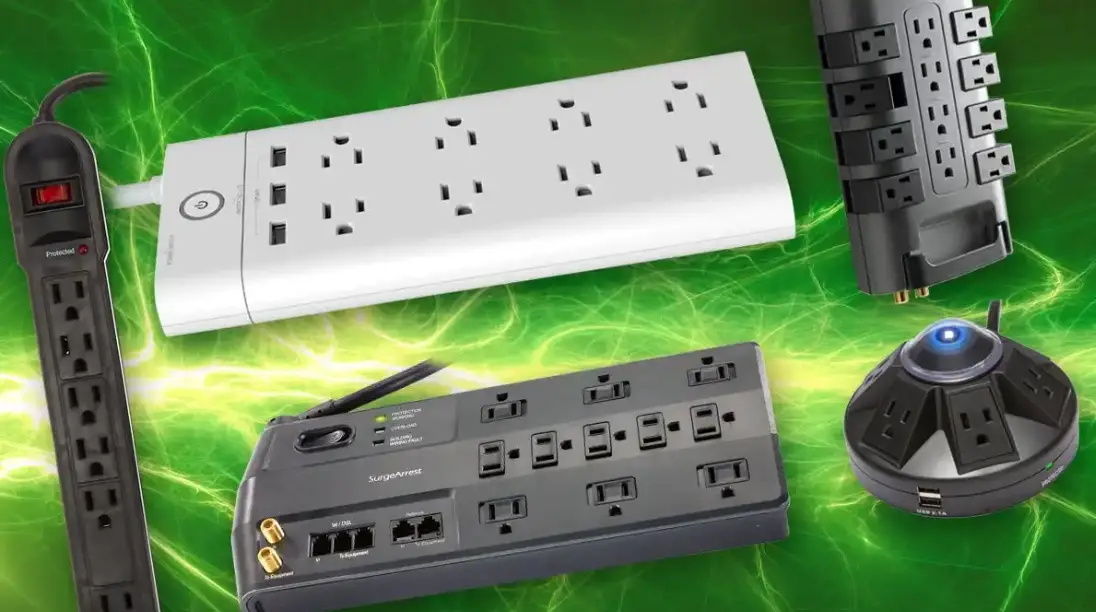
Look inside your primary panel box to make sure there are no other surge protectors installed already. If there are, you will need to disconnect them first before continuing with the installation process.
Step 4. Installing surge protector
Now it’s time to install your whole-house surge protector in the main electrical panel box. Take the cover off of the surge protector and place it inside the panel box. Make sure that all wires are connected properly and secure them with wire nuts. Once everything is in place, replace the side panels and top cover to finish your installation.
Step 5. Powering back on
After you have properly installed your surge protector, it’s time to restore electricity. Starting with the breaker switch closest to your main electrical panel box, flip each one back on sequentially. You can now rest assured knowing your entire home is safeguarded from electrical surges with a whole-house surge protector! [4]
Benefits and Drawbacks of a Whole Home Surge Protector
Safeguard your home from power surges that can harm or ruin electronics and appliances by having a whole house surge protector installed. It may even help reduce the risk of starting a fire due to an electrical issue. However, there are some drawbacks that you should consider before installing one in your home.
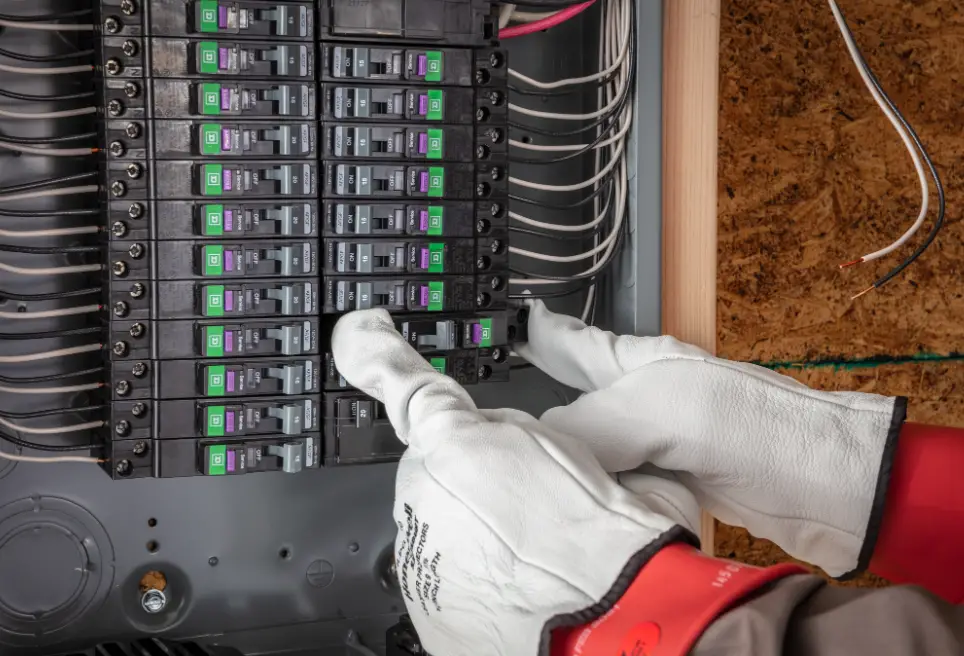
Some benefits of using a whole-home surge protector include: enhanced protection from power surges, higher energy efficiency due to improved performance of electronic equipment, and lower utility bills since appliances run more efficiently when they have the correct amount of power. Additionally, it can provide peace of mind knowing that your family is safe in the event of an unexpected power surge.
On the downside, whole house surge protectors do come with some drawbacks. For example, they can be expensive to install and require professional installation. Additionally, depending on the model and how often it is used, the cost of replacement parts may add up over time.
Furthermore, whole house surge protectors are not foolproof, so you must still use caution when dealing with electronic devices during a power surge.
Finally, if your home has an older electrical system with old wiring or outdated breakers, installing a whole house surge protector may not be effective.
Overall, while there are benefits and drawbacks to having a whole-home surge protector installed in your home, the advantages far outweigh any potential risks or costs associated with using one.
A properly installed whole house surge protector will greatly reduce the risk of damage to your electronics and appliances, and can provide peace of mind in the event of a power surge.
It is important to remember that your particular situation and budget will ultimately determine whether or not a whole house surge protector is right for you. If you decide to install one, make sure you hire a qualified electrician who knows how to properly install it.
With proper installation and maintenance, you can ensure maximum protection for your home’s electrical system. [5]
FAQ
Can I install my own whole house surge protector?
Yes, you can install your own whole house surge protector with some basic electrical knowledge and tools. However, it is recommended to hire an electrician as they have the experience and know-how to properly install this kind of device. Whole home surge protectors should be installed at the main electrical panel to ensure that all circuits are protected from power surges.
What do I need to install a whole house surge protector?
To install a whole home surge protector, you will need circuit breakers or fuses for each circuit, screwdrivers, wire strippers and cutters, voltage tester (for safety), a breaker bar (to access the main panel), and the appropriate surge protection device based on your needs. Be sure to read the instructions provided with the surge protection device to ensure safe and proper installation.
How do I maintain my whole house surge protector?
Regularly check your whole home surge protector for any signs of damage, like burned or melted plastic, or broken contacts. If it appears damaged, replace it immediately.
Additionally, if you experience any power surges in your home that may have caused damage to appliances or electronics, it is important to have your surge protector inspected by an electrician as soon as possible.
This can help prevent further damages from occurring and keep your family safe. Be sure to also unplug any large appliances or electronics when not in use to protect them from potential power surges.
Where do you mount a whole house surge protector?
The whole house surge protector should be mounted to the main electrical panel. It should be installed as close to the meter or breaker box as possible, as this will ensure all circuits are properly protected from power surges. Be sure to read the instructions provided with your surge protection device and follow them carefully for safe and proper installation. Finally, make sure that your breaker or fuse box is properly labeled so you can easily identify each circuit, and access it when needed.
How long does it take to install a whole house surge protector?
The amount of time it takes to install a whole house surge protector will vary depending on the complexity of your electrical system and the type of surge protection device you are installing. Generally, it should take an experienced electrician around 2-3 hours to complete the installation process.
What is the cost of installing a whole house surge protector?
The cost of installing a whole home surge protector can range widely depending on the type and size of your system, as well as any additional materials or labor needed. On average, expect to pay between $500-$1,000 for professional installation. However, this cost can be offset over time with lower energy bills and fewer repairs due to power surges. Overall, having a whole home surge protector installed is a worthwhile investment that can help keep your home and family safe from electrical hazards.
How big of a whole house surge protector do I need?
The size of the whole house surge protector you will need depends on the size and complexity of your electrical system. Be sure to consult an electrician or electric supply store for guidance on which surge protection device and size is best suited for your needs.
Additionally, it is important that the surge protector is capable of handling the voltage coming into your home, as well as any other potential power surges. Make sure to read the instructions provided with your chosen device before attempting installation.
Can a whole house surge protector be used in conjunction with other types of surge protectors?
Yes, a whole home surge protector can be used in conjunction with other types of surge protectors, such as plug-in units and uninterruptible power supplies (UPS). However, it is important to note that these other types of surge protectors may not provide the same level of protection as a whole home surge protector. Therefore, it is best to consult an electrician or electric supply store for guidance on which type of surge protection device is best suited for your needs.
How much does it cost to put a whole home surge protector?
The cost of installing a whole home surge protector can range widely depending on the type and size of your system, as well as any additional materials or labor needed. On average, expect to pay between $500-$1,000 for professional installation.
However, this cost can be offset over time with lower energy bills and fewer repairs due to power surges. Overall, having a whole home surge protector installed is a worthwhile investment that can help keep your home and family safe from electrical hazards.
Do modern homes need surge protectors?
Yes, modern homes need surge protectors. Power surges can cause damage to electronics and appliances throughout the home, resulting in costly repairs or replacements. A whole home surge protector helps safeguard against these hazards by providing a layer of protection between your home’s electrical system and potential power surges.
Additionally, having a surge protector installed can reduce energy costs by protecting against high voltage losses due to power outages or other factors.
Useful Video: How to Install Surge Protection | Ask This Old House
Conclusion
Once you have installed a whole house surge protector, it is important to regularly check its status and inspect the wiring for any signs of damage. If any of these signs are present, it is essential to replace the protector so that your home is protected from potential power surges. Additionally, you should consult an electrician if you notice any strange behavior or noise coming from the device. With proper maintenance and regular inspection, your whole house surge protector will be able to protect your home for many years.
Properly installing a surge protector in your home is a great way to prevent costly electrical damage caused by power surges. Installing one may seem complicated at first, but with the help of this guide and basic knowledge about electricity, anyone can do it. Just remember to use caution when working with electricity and consult a qualified electrician if necessary. By taking the time to install a whole house surge protector, you can be sure that your home is protected from unexpected power surges.
Thank you for reading this guide on how to install a whole house surge protector! We hope it has given you all of the information you need to get started.
Good luck and stay safe!
References
- https://www.homeserve.com/en-us/blog/how-to/whole-house-surge-protector-installtion/
- https://www.electronicshub.org/how-to-install-whole-house-surge-protector/
- https://www.ehow.com/how_8644490_install-wholehouse-surge-protector.html
- https://blog.se.com/sustainability/2022/04/08/what-are-the-pros-and-cons-of-whole-house-surge-protectors/
- https://www.electronicshub.org/how-to-install-whole-house-surge-protector/





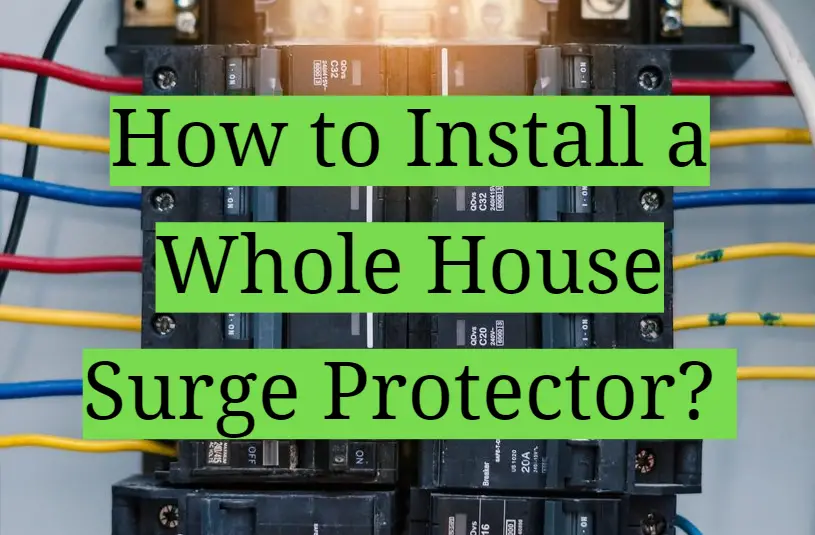





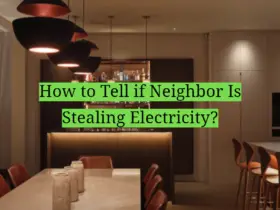


Leave a Reply